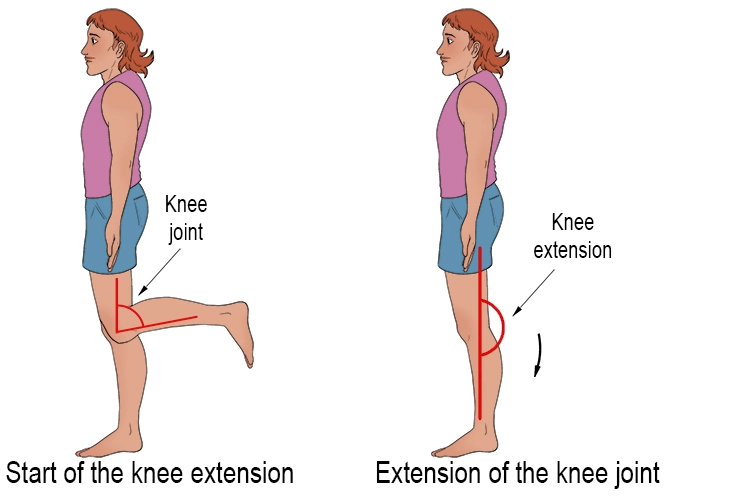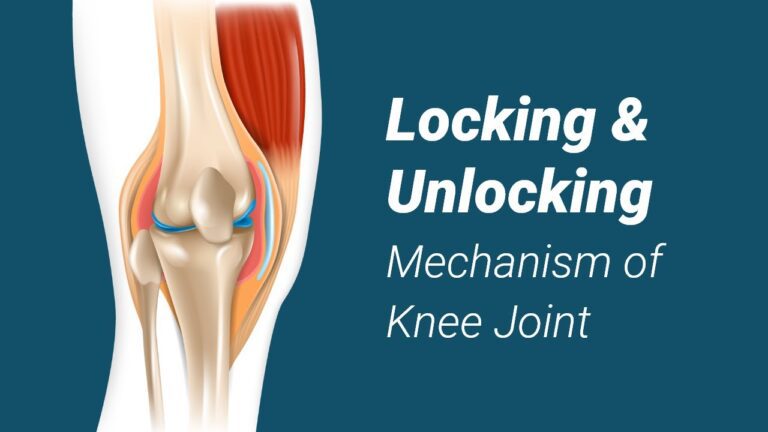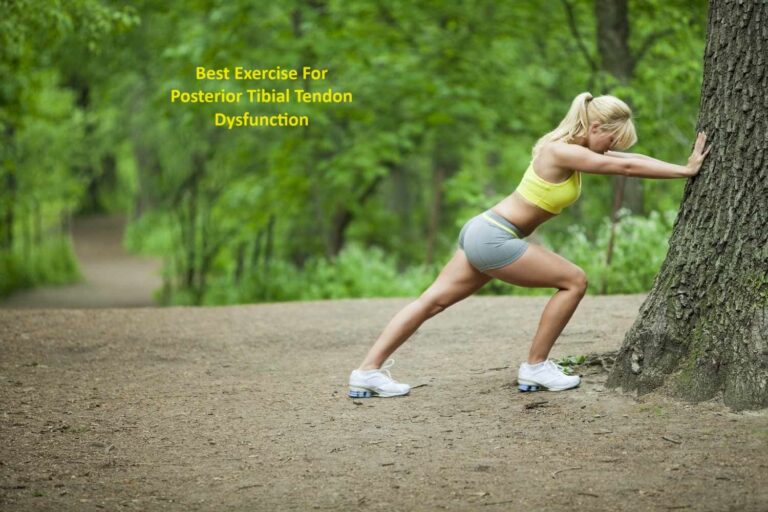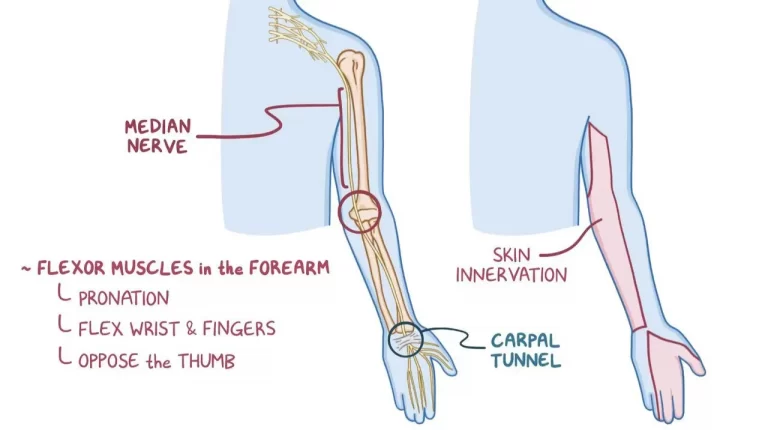Knee Flexion And Extension
Table of Contents
What is a Knee Flexion And Extension?
Knee flexion and extension are essential movements that occur at the knee joint, enabling various activities such as walking, running, and climbing stairs. The knee joint is a hinge joint that connects the thigh bone (femur) to the shinbone (tibia). It also involves the patella (kneecap), which articulates with the femur.
Flexion refers to the bending movement that decreases the angle between the thigh and the lower leg, bringing them closer together. When you bring your heel towards your buttocks, you are flexing your knee joint. Flexion is a fundamental movement used in activities like sitting down, kneeling, or lifting the leg.
Extension, on the other hand, is the opposite movement of flexion. It refers to the straightening or stretching of the knee joint, increasing the angle between the thigh and the lower leg. When you return your leg from a flexed position to an upright position, you are extending your knee joint. Extension is crucial for activities like standing up from a seated position, jumping, or kicking.
Both knee flexion and extension involve the coordinated actions of muscles, tendons, ligaments, and other structures surrounding the knee joint. The primary muscles involved in knee flexion are the hamstrings, which consist of the biceps femoris, semitendinosus, and semimembranosus muscles that are located at the back of the thigh. When they contract, they cause the knee to flex. Other muscles, such as the gastrocnemius (calf muscle), also assist in knee flexion.
In contrast, knee extension is primarily driven by the quadriceps muscles, which include the rectus femoris, vastus lateralis, vastus medialis, and vastus intermedius. The quadriceps muscles are located at the front of the thigh and are responsible for straightening the knee joint. These muscles contract and exert force on the patellar tendon, which connects the quadriceps muscles to the tibia, resulting in knee extension.
Maintaining a balance between knee flexion and extension is crucial for proper joint function and overall lower limb movement. Any imbalances, weakness, or injuries affecting these movements can lead to difficulties in performing daily activities, compromised stability, or limited range of motion.
Knee Flexion
What Is Knee Flexion?
- Knee flexion refers to the bending or movement of the knee joint, which results in a decrease in the angle between the femur (femur) and tibia (shin). It is one of the most important movements of the knee, allowing activities such as walking, running, squatting, and sitting.
In a standing position, knee flexion involves bending the knee joint to bring the heel closer to the buttocks. This movement is controlled by several muscles, including the hamstrings at the back of the thigh. The hamstrings play a crucial role in bending the knee as they contract to pull the lower leg up towards the buttocks. Bending the knee is necessary for various functional movements and in everyday life. This allows a wide range of motion in the lower limb, which facilitates walking and running by propelling the body forward. It also allows people to perform activities such as climbing stairs, kneeling, squatting, and bending.
Measuring knee flexion is important to assess joint function and identify potential limitations or abnormalities. Doctors often use a goniometer, a device that measures joint angles, to measure a range of motion during knee flexion. This information can help diagnose diseases, design rehabilitation programs, and monitor the progress of recovery from injuries or surgeries affecting the knee joint.
Knee Flexors Muscles
The knee flexors are a group of muscles located in the back of the thigh (back of the thigh) that play an important role in bending the knee. These muscles work together to bend the knee joint and lift the leg towards the buttocks. The main knee flexors include:
- Hamstrings: Groups of three muscles located on the back of the thigh. They include:
- Biceps femoris: This muscle has two heads (long head and short head) and is located on the outside of the thigh. – Semitendinosus: This muscle is located inside the thigh. – Semimembranosus: this muscle is also found on the inner thigh.
- Gastrocnemius: The gastrocnemius muscle is a large muscle located at the back of the lower leg that forms the calf. It crosses the knee joint and helps bend the knee when the foot is off the ground (while walking or running).
- Popliteus: The popliteus is a small muscle located behind the knee joint. It plays a role in initiating knee flexion by rotating the tibia laterally to open the knee joint prior to flexion.
These muscles work synergistically to flex the knee joint, and their strength and flexibility are crucial for activities as diverse as walking, running, and bending. Proper conditioning and flexibility of these muscles are important to maintain knee health and prevent injury.
Range Of Motion Of Knee Flexion
Knee flexion range of motion (ROM) refers to the degree of movement or flexion that the knee joint can achieve during flexion. It is measured in degrees and represents the arc through which the knee can be bent.
The normal knee flexion range of motion for adults is generally considered to be 135-145 degrees. This means that the knee joint can be bent so that the lower leg comes towards the buttock, causing the heel to approach or touch the buttock.
However, it is important to note that the actual range of motion can vary from person to person depending on age, physical condition, previous injuries, and individual anatomical differences. Some people may have more or less knee flexion based on these factors.
Assessing knee flexion range of motion is important in the diagnosis and monitoring of various conditions such as knee osteoarthritis, ligament injuries, muscle strains, and postoperative rehabilitation. Doctors usually use a goniometer, a joint angle tool, to accurately determine the range of motion in knee flexion. This measurement helps determine the extent of limitations or abnormalities and guides treatment and rehabilitation planning.
To check your knee flexion range of motion:
1. Prepare the environment: find a quiet and spacious area where the person can lie down or sit comfortably. Make sure your legs have enough space to move freely.
2. Give clear instructions: Explain the process to the person whose knee motion you are evaluating. Tell them that you will gently move their leg and that they should let you know if they experience pain or discomfort during the procedure.
3. Starting position: Ask the person to lie on their back or sit on a stable surface with their legs extended in front of them.
4. Ankle Support: Place one hand under the person’s ankle to support and stabilize the leg while assessing movement.
5. Assessment of extension (zero degrees): When the person’s leg is fully extended, observe whether the knee is completely straight or slightly bent. Ideally, the knee should be fully extended (straight), with no visible bend.
6. Assessment of flexion: Slowly and carefully bend the person’s knee, bringing the heel to the buttock. Encourage them to relax and let their legs move naturally. Monitor the degree of flexion until you can no longer bend the knee comfortably.
7. Measuring range of motion: A goniometer, a specially designed tool, can be used to measure a range of motion. Place the fixed arm of the goniometer on the person’s thigh and align it with the hip joint. Place the moving hand along the leg and align it with the knee joint. Read the protractor of the goniometer at the intersection of the two arms.
8. Record the measurement: Mark the measurement obtained on the goniometer as the degree of bending achieved.
9. Assess for pain or discomfort: Throughout the range of motion assessment, ask the person if they have pain, discomfort, or resistance in the knee.
If this happens, stop the movement and avoid pushing beyond a comfortable range. Remember, if a person has a history of knee disease or a recent injury, it is recommended to consult a doctor for accurate evaluation and guidance.
Knee Flexion Test
The knee flexion test, also known as the sit and stretch test, measures the flexibility of the thighs and lower back. It is often used in fitness and rehabilitation to assess the flexibility of these muscle groups.
How to do the knee flexion test:
- Find a flat surface, such as a rug or floor, and sit on it with your legs straight out in front of you.
- Place a tape measure or a flexibility-testing device, such as a sit-and-reach box, between your legs.
- Make sure the device is aligned with your feet and the zero mark is at the level of your heel.
- Take off your shoes if you are wearing them, as they can interfere with the accuracy of the test.
- Keep your legs fully extended and place your hands on top of each other with the fingertips pointing towards the toes.
- Inhale deeply and as you exhale, slowly bend forward from the hips and reach as far as you can.
- Slide your hands along the surface of the gauge or stretcher, trying to avoid your toes.
- Hold for a few seconds at the farthest point you can reach without bouncing or swaying.
- Mark the distance reached on a tape measure or on the scale of an elastic device.
- Repeat the test two or three times, taking a short break between each attempt.
- As a final result, record the best test scores.
The knee flexion test mainly assesses the flexibility of the hamstrings, but it also includes the flexibility of the lower back and hips to some extent. This can help identify a feeling of tension in these muscle groups that can cause postural problems, reduced range of motion, or increased risk of injury. It is important to remember that individual resilience can vary and results should be interpreted in the context of other factors and individual goals.
Exercise For Knee Flexion
To improve knee flexion, it’s important to focus on exercises that target the muscles responsible for knee flexion, especially the hamstrings and calf muscles. Here are some exercises that can help increase knee flexion:
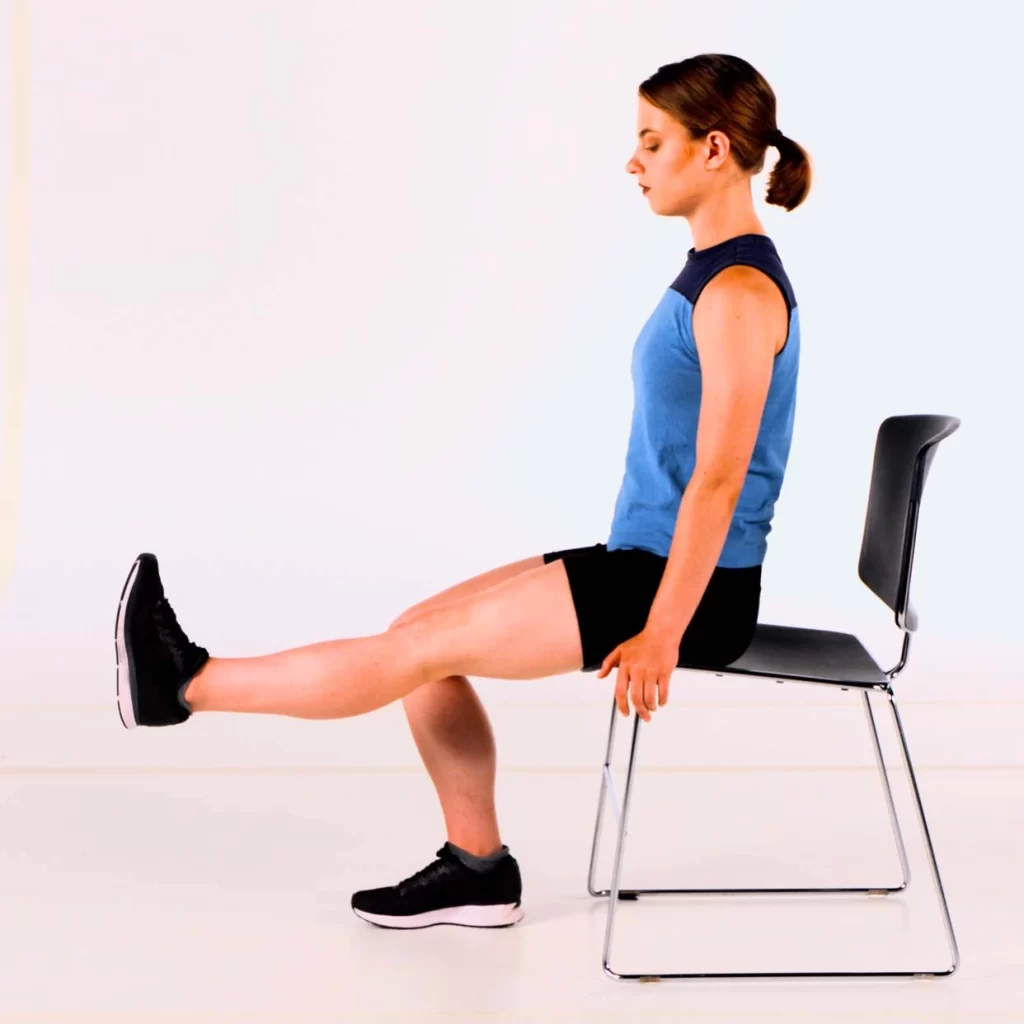
- Hamstring stretches: Do hamstring stretches to improve hamstring flexibility and range of motion. You can try stretching your hamstrings while standing, sitting, or lying down. Hold each stretch for about 20-30 seconds and repeat several times on each leg.
- Sliding walls: Put your back to the wall while standing with your feet hip-width apart. Slowly slide down the wall into a squat position, keeping your knees bent and following your toes. Go as low as possible and aim for a 90-degree angle in your knees. Hold for a few seconds, then push through your heel to come back up. Do 2-3 sets of 10-15 repetitions.
- Calves: Strong calves are essential for proper knee flexion. Stand with your feet shoulder-width apart and rise as high as possible on your toes. Slowly lower your heels. You can do leg raises with both legs at the same time, or do single leg raises for an extra challenge. The goal is to do 2-3 sets of 10-15 repetitions.
- Seated knee bend:
- Put your feet up on the floor and take a seat on a bench or chair.
- Slowly lift one leg off the floor and bring the heel to your buttocks, bending the knee as much as possible.
- Hold this position for a few seconds and then slowly lower your legs back to the floor.
- Use the other leg to complete the exercise.
- On each leg, try to perform 10 to 15 repetitions.
- Standing Hamstring Curls:
- Stand with your feet shoulder-width apart and, if necessary, take support from a chair or a wall.
- Bend the other knee and bring your heel to your butt as if you were trying to kick your butt.
- Hold this position for a moment and then slowly lower your legs back to the floor.
- Repeat with the other leg.
- Start with 10-15 repetitions on each leg and gradually increase as you get stronger.
- Prone Knee Flexion:
- Lie face down on a mat or bed, legs straight.
- Bend the other knee and bring your heel to your glutes, keeping your thigh on the mat.
- After a little period of holding the posture, carefully drop your legs back down.
- Apply the same technique to the opposite leg.
- Do 10-15 repetitions on each leg.
- Seated Leg Extensions:
- With your feet flat on the floor and your back straight, take a seat.
- Extend one leg straight in front of you, keeping the knee as straight as possible.
- Hold the extended position for a few seconds and then slowly lower your legs back down.
- Repeat with the other leg.
8. Seated knee flexion stretch:
- Sit on the edge of a chair or bench with your feet on the floor.
- With the heel still on the ground, extend one leg in front of you.
- Slowly slide your leg back towards you, bend your knee, and bring your heel closer to your glutes.
- Hold the stretched position for 15-30 seconds, and lightly touch the front of the thigh and knee.
- Return the leg to the beginning position while gradually releasing the strain.
- Repeat the stretch with the other leg.
- Try to do 2-3 repetitions with each leg.
Remember to start with a weight or amount of resistance that pushes you but yet allows you to maintain proper technique.
Special Test For Knee Flexion
There are several special tests that health professionals can use to assess certain conditions or injuries when evaluating knee flexion. Here are some commonly used special knee flexion tests:
- Passive knee flexion test: This test is performed with the patient in the supine position. The examiner carefully flexes the patient’s knee, trying to achieve the greatest possible range of motion. The test helps determine the patient’s range of passive knee flexion and identifies potential limitations.
- Heel-to-buttock test: With the patient lying prone, the examiner bends the knee and tries to move the patient’s heel to the buttock. This test assesses the ability to achieve full knee flexion and can identify any limitations or pain during movement.
- Gastrocnemius Length Test: The gastrocnemius muscle, which is one of the calf muscles, can sometimes limit knee flexion. In this test, the patient stands with their hands against a wall, one leg extended straight back, the heel on the floor, and the other leg forward, with the knee slightly bent. If the flexibility of the gastrocnemius muscle is limited, the patient will have difficulty keeping the heel in full contact with the ground in the extended leg.
- Ober’s test: This test is used to assess the flexibility of the iliotibial (IT) band, which can affect knee flexion. The patient lies on his side with the lower leg extended and the upper body flexed at the hip and knee. The examiner stabilizes the patient’s pelvis and then slowly abducts and extends the lower leg. When the IT band is tight, the leg remains elevated, indicating limited flexibility.
- Thomas’s test: Although Thomas’ test primarily assesses hip flexion, it can also provide insight into knee flexion. The patient lies on the table, one knee is bent to the chest, and the other leg hangs on the table. If the dangling leg is unable to achieve full knee flexion due to tightness in the hip flexors or quadriceps, this may also indicate limited knee flexion.
- Goniometry:
- Goniometry is a measurement technique used to assess the range of motion of a joint, including knee flexion.
- A special tool, a goniometer, is usually used to measure the knee flexion angle.
- The subject lies on a flat surface with straight legs. The goniometer is aimed at the knee joint and the person is then asked to bend the knee as much as possible.
- The angle of the knee joint is measured and recorded.
- The normal knee flexion is usually considered to be around 135-155 degrees.
7. Sit And Reach Test:
- Although the sit and reach test is primarily used to assess thigh and lower back flexibility, it may indirectly reflect the extent of knee flexion.
- Legs out in front of you while you sit on the floor.
- Place a ruler or tape measure on the ground between your feet in front of your heels.
- Extend your arms forward as far as possible, sliding them along the ruler or measuring tape.
- The distance above the toes shows the flexibility of the hamstrings which affects knee flexion.
- This test provides a general overview of the overall flexibility of the lower limbs, including the ability to bend the knee.
It is important to note that these tests are usually performed by healthcare professionals with the necessary training and expertise. They help provide valuable information in the diagnosis of specific diseases or injuries related to knee flexion.
Knee Extension
What is Knee Extension?
- Knee extension refers to the straightening movement of the knee joint, which increases the angle between the thigh and lower leg. This movement is usually associated with the quadriceps muscles in the front of the thigh, which play an important role in knee extension.
Knee extension is an important part of many activities such as walking, running, jumping, and kicking. It is also an important movement in lower body exercises such as squats, pulse, and leg presses. Strengthening the muscles involved in knee extension, especially the quadriceps, is important to maintain knee stability, prevent injury and improve functional range of motion.
In the clinical setting, knee extension is often assessed to assess the integrity and strength of the quadriceps muscles and the overall function of the knee joint. Lack of full knee extension, known as knee flexion contracture, can indicate a variety of conditions or damage, such as muscle weakness, joint stiffness, or neurological problems.
It is worth knowing that knee extension must be done in the right way and with the right technique to avoid excessive stress on the joint and surrounding structures. If you have concerns or specific questions about knee lengthening or rehabilitation, it is recommended that you consult a qualified physician, such as a physical therapist or sports medicine specialist.
Knee Extensors Muscles
The main extensor muscles of the knee are the quadriceps, often called the quadriceps. These muscles work together to extend the knee joint and are located on the front of the thigh. The quadriceps group consists of four individual muscles:
- Rectus Femoris: This muscle is located in the middle of the front of the thigh and is the only quadriceps muscle that crosses both the hip and knee joints.
- Vastus Lateralis: This is the largest and most lateral muscle of the quadriceps group. It is located on the outside of the thigh and promotes knee extension.
- Vastus Medialis: Located on the inner thigh, response medialis helps stabilize the knee (patella) during knee extension. It usually targets exercises designed to treat patellar tracking problems.
- Vastus Intermedius: Located deep between the vastus lateralis and vastus medialis, the vastus intermedius helps extend the knee and contributes to overall quadriceps strength.
These muscles work together to generate the force needed to extend the knee joint. It is important to note that the hamstrings, located at the back of the thigh, also work in opposition to the quadriceps. They act as knee flexors and work with the quadriceps to provide stability and control of knee joint movements.
Proper strengthening and rehabilitation of the knee extensors, including the quadriceps, is critical to maintaining knee stability, injury prevention, and optimizing functional range of motion. Exercises such as squats, leg presses, pulse, and leg extensions target these muscles and help improve their strength and endurance. As always, it is recommended to consult a physician or qualified fitness trainer for personal guidance and exercise recommendations.
Range Of Motion Of Knee Extension
The normal range of motion (ROM) for knee extension, also known as knee flexion contracture, is usually considered to be 0 degrees. In other words, when the knee is fully extended, it is at a 0-degree angle. This means that the leg is in line with the thigh.
However, it is important to note that even mild hypertension (above 0 degrees) is within the normal range for some people. Hyperextension refers to the ability to extend the knee joint beyond the neutral 0-degree position. In some people, the knee can naturally extend a few degrees above 0 degrees without causing problems or discomfort.
On the other hand, limitations in knee extension can be caused by a number of factors, such as muscle tension, joint stiffness, or injury. When the knee is not fully extended or the knee cannot extend to 0 degrees, it is called flexion contracture of the knee. Knee flexion contracture can be caused by conditions such as muscle imbalances, ligament injuries, arthritis, or complications after surgery.
In the clinical setting, knee extension range of motion can be assessed with a goniometer, a specialized tool for measuring joint angles. This measurement helps health professionals assess the flexibility and mobility of the knee joint and identify any limitations or abnormalities.
If you are concerned about knee range of motion or if you have difficulty with knee movement, it is recommended that you consult a doctor such as a physical therapist or orthopedist. They can provide a thorough evaluation, diagnosis, and appropriate treatment or rehabilitation strategies based on your specific needs.
Here’s how to check your knee extension range of motion:
1. Prepare the patient: Have the patient lie on a flat surface, such as an examination table or bed, with legs extended.
2. Position: Make sure the patient’s leg is straight and relaxed and that the knee is fully extended. The patient should be in a comfortable and relaxed position during the examination.
3. Starting position: Place one hand behind the patient’s knee to stabilize it, and the other hand over the patient’s ankle.
4. Active range of motion (AROM): Instruct the patient to actively extend the knee while extending the leg. Encourage these movements to be done slowly and smoothly.
5. Observe and measure: Observe the movement of the patient’s knee joint when it is extended. Be aware of any limitations, pain, or discomfort the patient is experiencing. Use visual cues to assess the degree of knee extension.
6. Goniometer measurement (optional): If available, you can use a goniometer, a special tool for measuring joint angles, to get a more accurate measurement for knee extension. Place the fixed arm of the goniometer parallel to the long axis of the femur (thigh) and the moving arm parallel to the long axis of the lower leg (tibia). Align the center of the goniometer with the axis of the knee joint and then measure the angle formed when the patient extends the knee.
7. Repeat the procedure: Repeat the procedure a few times to ensure accuracy and identify any inconsistencies in the patient’s movement.
8. Document findings: Record findings and measurements in the patient’s medical record or examination notes.
Note any limitations, pain, or abnormalities noted during the knee extension test. It is important to remember that a qualified healthcare professional, such as a physician, physical therapist, or orthopedist, should assess the range of motion of knee extension. They have the necessary knowledge and expertise to accurately assess the knee joint and interpret the findings.
Knee Extension Test
The knee extension test, also known as the straight leg raise test or the active knee extension test, is a clinical assessment used to assess the range and strength of knee extension motion. It is usually performed by health professionals, especially orthopedics and sports medicine, to evaluate the function and integrity of the quadriceps and knee joints.
The knee extension test is usually performed as follows:
- Preparation: The person undergoing the test usually lies on their back on an examination table or firm surface. The legs are fully extended and the ankles are relaxed.
- Test Execution: The examiner carefully lifts one leg off the table, grasping the heel and providing support under the thigh. The knee is then gradually extended, raising the leg to the ceiling, keeping it as straight as possible.
- Observation: the examiner observes the movement and orientation of the leg during the knee extension. They note the angle at which the knee rests, any pain or discomfort the person reports, and any compensatory movements or limitations.
- range of motion assessment: the examiner measures the angle of knee extension with a goniometer, a tool used to measure joint angles. A goniometer is usually aligned with the femur and tibia to determine the angle reached during knee extension.
- Strength Assessment: Additionally, the examiner can assess a person’s strength during knee extension by applying gentle resistance or asking the person to push their arm. This helps assess the ability of the quadriceps to generate force during knee extension.
The knee extension test provides valuable information about a person’s ability to fully extend the knee joint, identify potential limitations, identify muscle imbalances, and assess overall quadriceps function. This can be useful in diagnosing conditions such as quadriceps strains, patellofemoral dysfunction, or post-operative complications affecting knee extension.
It is important to note that the knee extension test is usually performed by healthcare professionals who are trained to perform and interpret these assessments. If you are concerned about the function or mobility of your knee, it is recommended that you consult a qualified physician, such as a physiotherapist or orthopedist, who can perform a thorough assessment and provide guidance based on your specific needs.
Exercise For Knee Extension
There are several exercises that can help improve knee extension and strengthen the muscles involved in knee extension, especially the quadriceps. Here are some commonly recommended knee extension exercises:
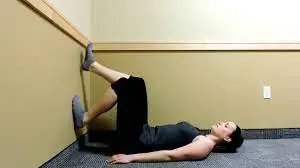
- Straight leg raise: Lie on your back with one leg extended and the other leg bent. Tighten the quadriceps of the extended leg and lift it off the ground, keeping it straight. Hold for a few periods, then lower it again. Repeat several times and switch legs.
- Quad Sets: Sit or lie down with your feet in front of you. Contract the quadriceps by pressing the back of the knee into the floor or surface, keeping the leg straight. Repeat for several sets.
- Short Arc Quads: Lie on your back and place a towel or foam roller under your knees. Keep your thighs flat and slowly straighten your knees as you lift your legs off the towel or roller. Hold the extended position for a few seconds and then lower it. Repeat several times.
- Wall slide: Stand with your feet shoulder-width apart and your back against a wall. Slide up the wall into a partial squat, keeping your knees in line with your toes. Slowly straighten your knees and slide up the wall. Repeat several times.
- Stationary Bike: Riding a stationary bike can help promote knee extension and strengthen the quadriceps. Start with a comfortable resistance level and pedal in a controlled manner, focusing on fully extending your knees with each pedal stroke.
It’s important to start these exercises at a level that matches your current strength and flexibility. If you have knee conditions or problems, it is recommended that you speak to a healthcare practitioner, such as a physiotherapist, who can provide personalized guidance, determine the most appropriate exercises and ensure proper form and technique to prevent further injury.
Remember to listen to your body, start slowly and gradually increase the intensity or difficulty of the exercises as you progress. Consistency and proper form are key to achieving the best results and reducing the risk of injury.
Special Test For Knee Extension
In clinical settings, several specialized tests are used to evaluate knee sprains and related diseases. here are some samples:
- Active knee joint test: This test assesses a person’s ability to actively extend the knee joint. The person lies on their back with their legs fully extended and tries to straighten the knee as much as possible. The researcher observes and measures the angle reached by extending the knee with a goniometer.
- Passive knee extension test: In this test, the examiner checks the person’s leg and gently extends the knee joint while the person relaxes. The examiner observes the range of motion achieved and checks for limitations or discomfort during passive knee extension.
- Ober’s test: This test is used to assess tightness or contracture of the iliotibial (IT) band. A man lies on his side, his legs are bent. The examiner lifts the leg and lets it hang freely from the table. Then they slowly lower their legs to the table. If the leg remains vertical and does not touch the table, this indicates a tight IT band.
- Ely’s test: This test evaluates the tension or contraction of the rectus femoris muscle. The person lies prone and the examiner bends his knee to bring the heel to the buttock. If a person’s hip lifts off the table when the knee is bent, this is a sign of rectus femoris.
- Thomas’s test: This test helps assess the tension in the hip flexors, which can affect knee extension. A man lies on his back on the edge of a table, one knee drawn to his chest. One leg hangs over the table with the knee extended. If the extended leg rises from the table or cannot lie down, this indicates a strain in the hip flexors.
These tests are typically used in conjunction with other clinical assessments to assess knee extension, identify potential limitations, and diagnose specific medical conditions or muscle imbalances. They are usually performed by health professionals, such as physical therapists or orthopedists, who are trained to perform and interpret these tests accurately.
Summary
Understanding knee flexion and extension is essential for healthcare professionals, physiotherapists, athletes, and individuals seeking to improve their knee health or rehabilitate knee injuries. By strengthening the muscles involved and adopting proper techniques, it is possible to enhance knee flexibility, stability, and overall joint health.
FAQs
The muscle around the knee joint is what bends or straightens the knee. The knee’s common muscles are those which beget the knee to either bend or unbend. They include the hamstrings and gastrocnemius at the reverse, which bend( flex) the knee.
There are Four distinct muscles that make up the quadriceps femoris. Three of the heads of the vastus intermedius, vastus medialis, and vastus lateralis come from the femur. The hip bone gives rise to the fourth head, the rectus femoris
Your joint has a better chance of being a good performer in your daily activities if it has an ideal range of motion. Most people typically have their knees flexed to 135 degrees and extended to 0 degrees (completely straight).
When you straighten your leg, the quadricep muscles pull on the quadricep tendon, which pulls the kneecap to make the knee extend. When you bend it, the hamstring muscles contract and pull the tibia backward, causing the knee to flex.
The hamstring group consists of the semitendinosus, semimembranosus, and biceps femoris (long and short heads). The hamstring muscles, which span the back of the thigh, are the main knee flexors.
According to these findings, knee joint angles between 80° to 130° offer a stable environment for muscle electrification, however mechanical parameters like knee joint angle (i.e., lever arm length) alter torque output when one wants to contract the quadriceps to their maximum capacity during an isometric contraction.
Some flexion movement examples include Elbow flexion: bending the elbow to bring the forearm upward. Knee flexion: bending the knee to bring the lower leg upward. Shoulder flexion: lifting a straight arm up in front of the body.

